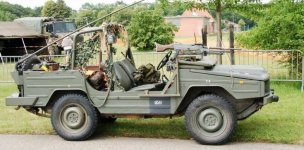The ubiquitous availability of highly attritable and high-fidelity surveillance and reconnaissance assets, from electronic and multispectral sensing, to video feeds from UAVs, leaves little room to hide. Modern camouflage designed to reduce the electromagnetic signature beyond the visible spectrum can render armored vehicles less obvious to passive surveillance, but generally fall short of concealing vehicles from more determined observation. Turkey’s domestically produced Bayraktar and Anka UAVs had little difficulty in picking out Syrian armour amidst Idlib’s sparse terrain, and then following their movements. Once found, vehicles can also be targeted by increasingly precise and tailored munitions, whether delivered by the UAV, or from afar.
It is fair to say that Western armies have to a large extent been in denial about the impact of these capabilities. Awaiting a revolution in swarm technology and AI, Western forces have largely overlooked the fact that it is the density of sensors that is decisively reshaping the battlefield. Of course, much criticism can be leveled at the Syrian forces for their poor vehicle handling, lack of camouflage, and tendency to bunch up in targetable laagers. However extensive testing in the US and UK has consistently shown that Western vehicles are not much harder to find. The deep and unmistakable tracks that armoured vehicles cut in the ground leave a trail that UAVs can follow, and the fishhook turn leaves little doubt as to which woodblock the vehicle has entered, even if it has subsequently set up multi-spectral screens and camouflage.
Given the range and endurance of modern ISR capabilities, and the distance that armoured forces must traverse under threat before actually coming into the direct fire zone, it must be doubted whether existing concepts of armoured manoeuvre will remain viable, as armoured units face persistent attrition before ever they reach an adversary ground formation.






